With its perfect harmony of dashi broth and sweet, savory fried tofu pouches, Kitsune Udon is one of the most beloved udon noodle soups in Osaka, Japan. The fried tofu adds just the right touch, and its oil content contributes to the dish’s rich, savory depth.
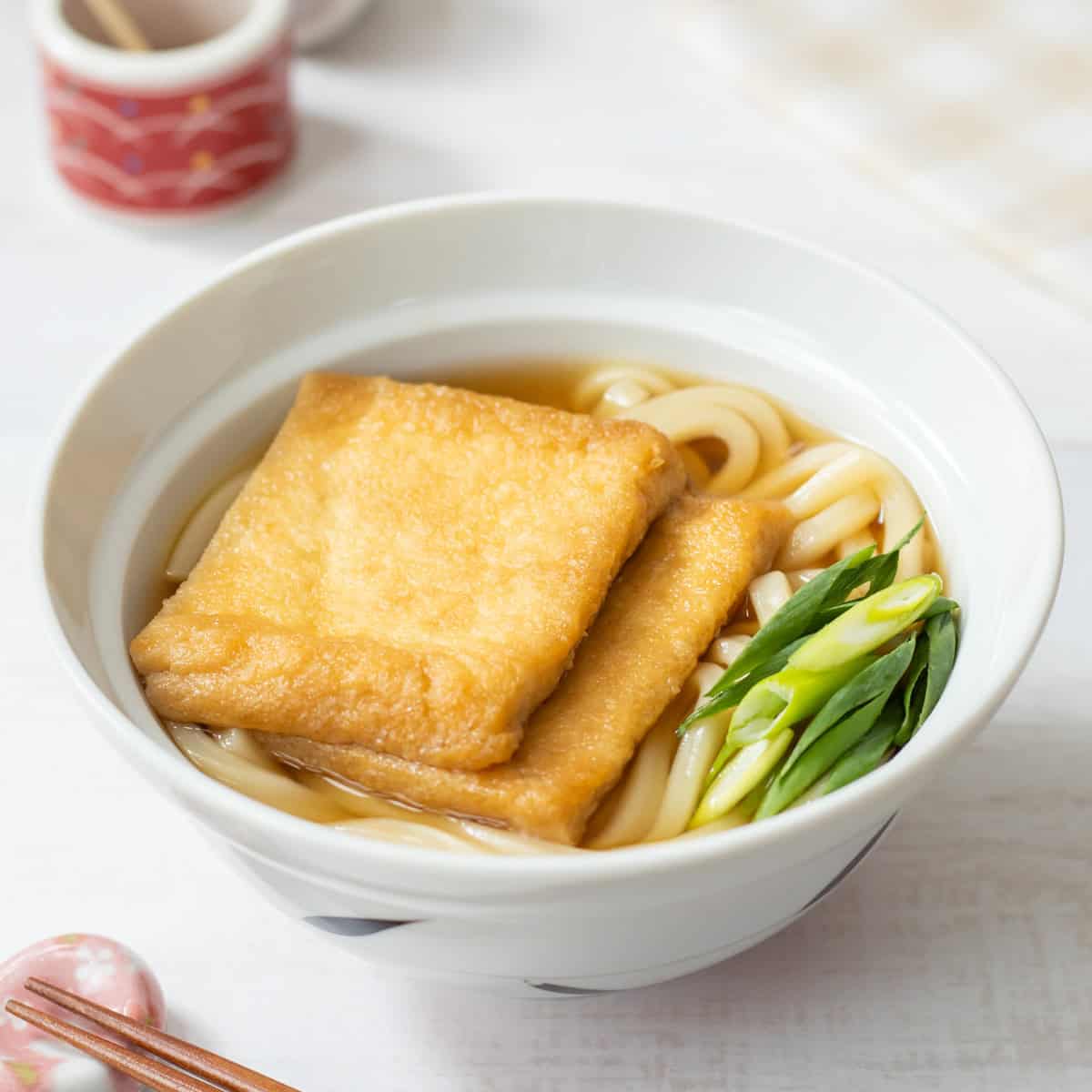
Jump to:
What is Kitsune Udon?
Kitsune Udon is a type of Japanese udon noodle soup topped with sweet and savory seasoned fried tofu pouches called inari age. The term "Kitsune" means fox, but in this dish, it refers to the seasoned fried tofu pouches.
At first glance, foxes and fried tofu may seem unrelated, but in Japan, there is folklore that foxes are said to be fond of fried tofu. The color and shape of the tofu pouches are associated with foxes, which is why this dish is called kitsune udon.
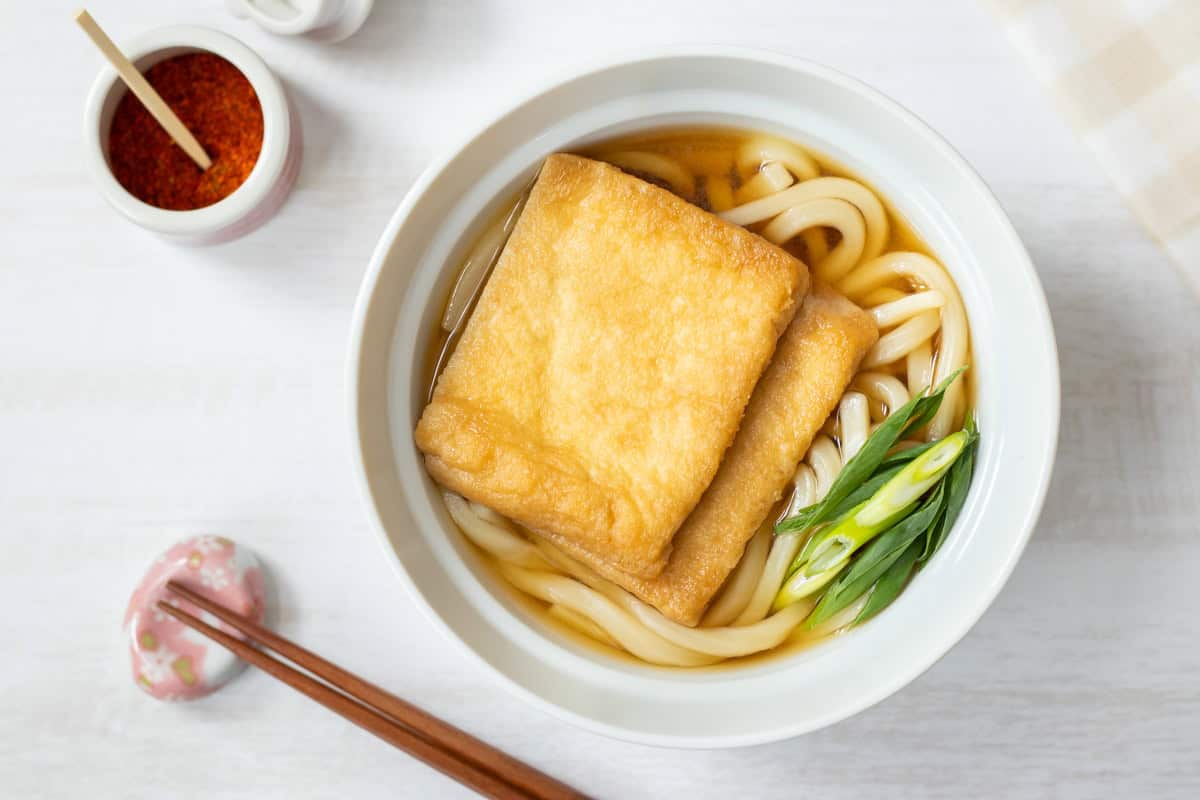
The story behind Kitsune Udon
So, why are seasoned fried tofu pouches placed on udon noodle soup? There is a bit of a story behind it. This dish was created at an udon restaurant called "Matsubaya" (now known as "Usamitei Matsubaya") in Osaka, Japan.
The owner of Matsubaya, who had experience working at a sushi restaurant, used to serve inari sushi alongside udon noodle soup. Inari sushi is a dish in which sushi rice is wrapped in a sweet and savory seasoned fried tofu pouch (inari age).
However, at this restaurant, inari sushi was served with the fried tofu on a separate plate from the sushi rice. As a result, some customers started placing the fried tofu on top of their udon noodle soup. Seeing this, the owner began serving udon noodle soup with the fried tofu from the start, giving birth to kitsune udon.
Though this dish was created by coincidence, the combination of the udon soup and seasoned fried tofu pouches creates a perfect harmony, as if it had been carefully planned from the beginning. The richness and smooth texture of the fried tofu transform the udon noodle soup into a dish that is both light and flavorful.
Today, this dish is enjoyed all over Japan and is considered one of the signature dishes of Osaka, along with Takoyaki and Okonomiyaki.
Fried tofu options
The key ingredient in this dish is seasoned fried tofu pouches, which are easy to prepare if you have aburaage (fried tofu pouches) on hand. All you have to do is remove the excess oil and then simmer them in a seasoned liquid so the flavors can soak in. My recipe includes detailed instructions.
However, if you want to make kitsune udon more conveniently, it might be worth checking out your local Asian market. You may find commercially prepared fried tofu products labeled as "inari age" or "inarizushi-no-moto" (which means ingredients for inari sushi) in either the refrigerated or canned goods aisle.
With either of these store-bought options, you can make this dish by simply placing the tofu pouches on top of your udon. Feel free to choose whichever option works best for you.
Regional styles of udon soup seasoning
When preparing kitsune udon, it is best to focus on the flavor of the udon soup.
The seasoning of udon soup varies primarily between the Kanto region in eastern Japan and the Kansai region in western Japan. In the Kanto region, a large amount of soy sauce is used, giving the soup a rich color and a strong, salty flavor. In contrast, the Kansai region uses a more flavorful dashi broth and less soy sauce, resulting in a lighter color and milder saltiness.
While kitsune udon can be prepared with either style of seasoning, given its origin in Osaka (located in the Kansai region), I highly recommend the Kansai style. Kansai-style seasoning typically involves using awase dashi, made from kombu (dried kelp) and bonito flakes. The combination of the rich dashi broth and the sweet, savory fried tofu pouches is sure to captivate your taste buds. Try it with my recipe!
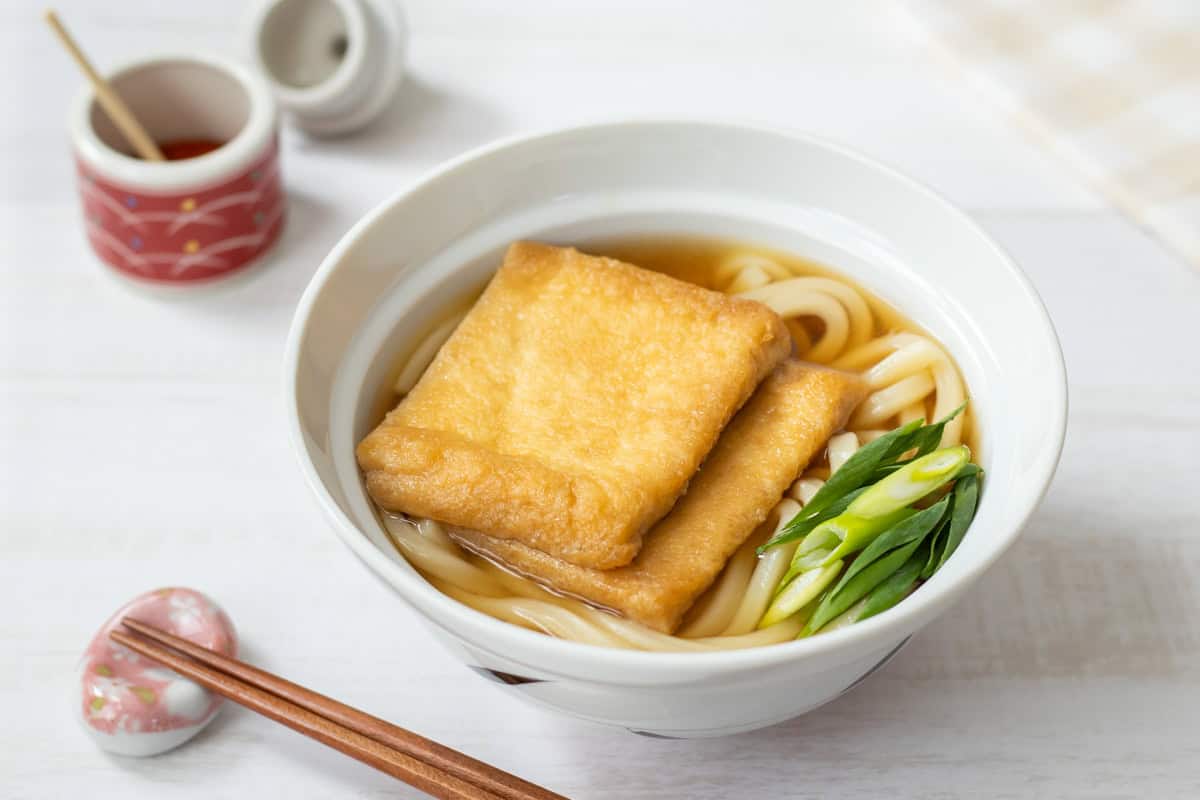
📋Step-by-step recipe
Ingredients
- 1 serving udon noodles (fresh, dried, pre-cooked, or frozen)
- 2.1 oz aburaage (fried tofu pouches) or inari age (seasoned fried tofu pouches) (If using store-bought inari age, the ingredients listed below under "For seasoning aburaage" are not necessary.)
- 1 green onion / scallion
- ½ Tbsp mirin
- 1 ½ Tbsp light soy sauce (You can substitute it with regular soy sauce; the main difference is the color.)
Awase dashi (udon broth) — if using aburaage:
- 2 ¼ cups water
- 0.2 oz kombu (dried kelp)
- 1 cup bonito flakes (katsuobushi)
Awase dashi (udon broth) — if using store-bought inari age:
- 1 ½ cups water
- 0.15 oz kombu (dried kelp)
- ⅗ cup bonito flakes (katsuobushi)
For seasoning aburaage:
- ½ cup awase dashi (prepared in step 4)
- 1 Tbsp mirin
- 1 Tbsp sugar
- 1 Tbsp soy sauce
Instructions
🕒 Total: 1 hr 10 minsIf you already have udon broth (awase dashi or another type of dashi), start from step 5. In that case, use 1 ¾ cups (420 ml) if using aburaage, or 1 ¼ cups (300 ml) if using store-bought inari age per serving. Additionally, if you are using store-bought inari age, you can skip steps 5 and 6.
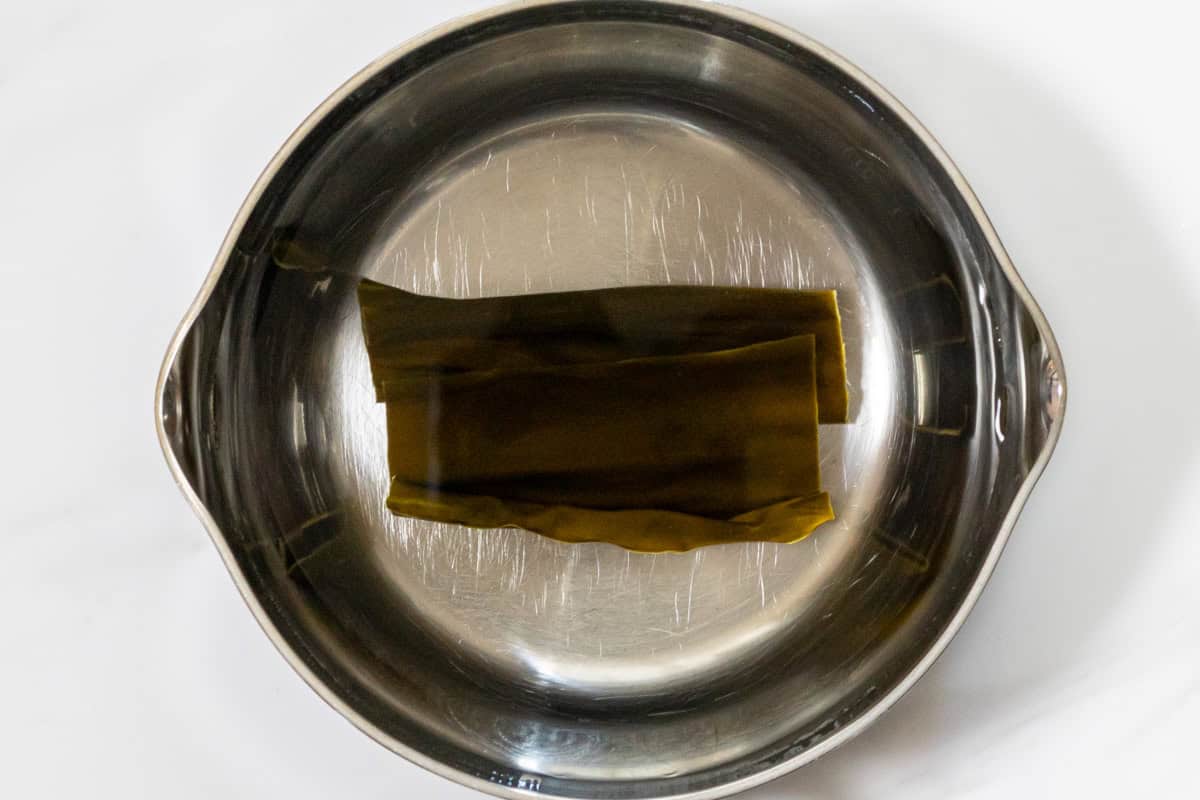
Step 1
Put water and kombu in a pot and let it sit for at least 30 minutes until the kombu softens.
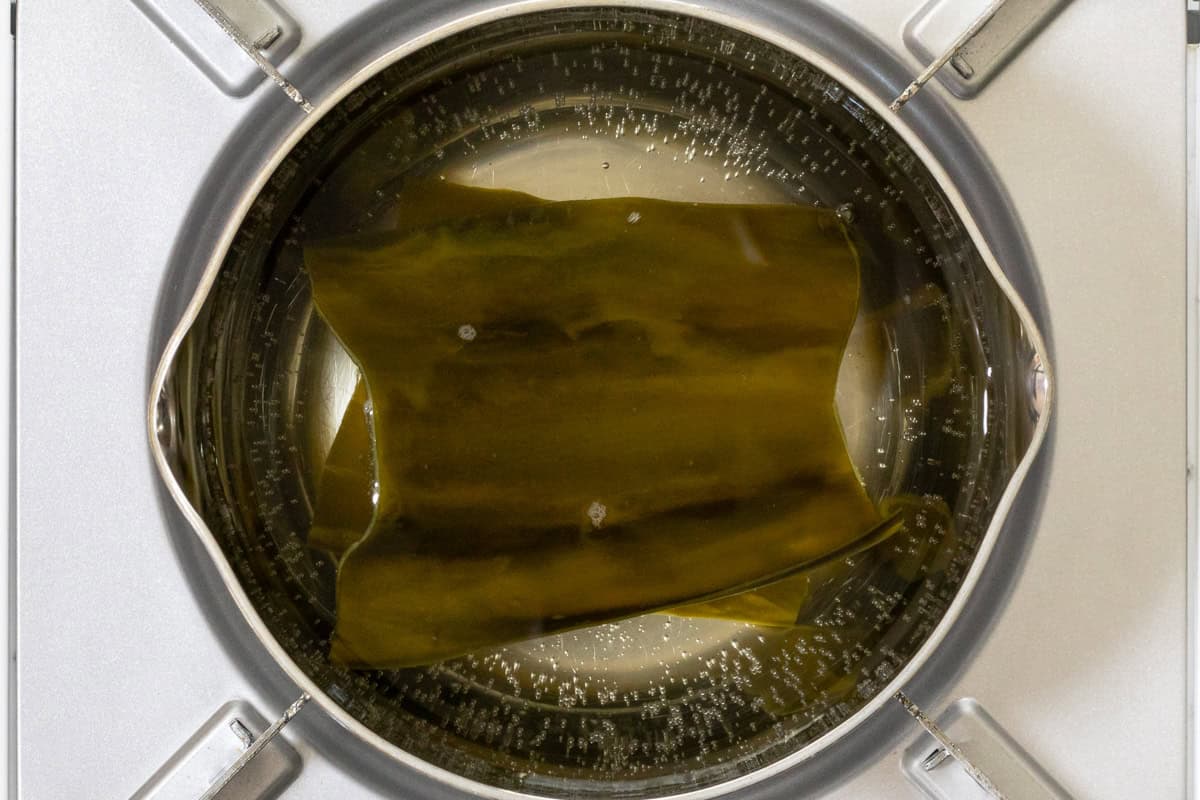
Step 2
Heat the pot over very low heat for about 10 minutes or longer. When small bubbles start to appear on the surface, remove the kombu.
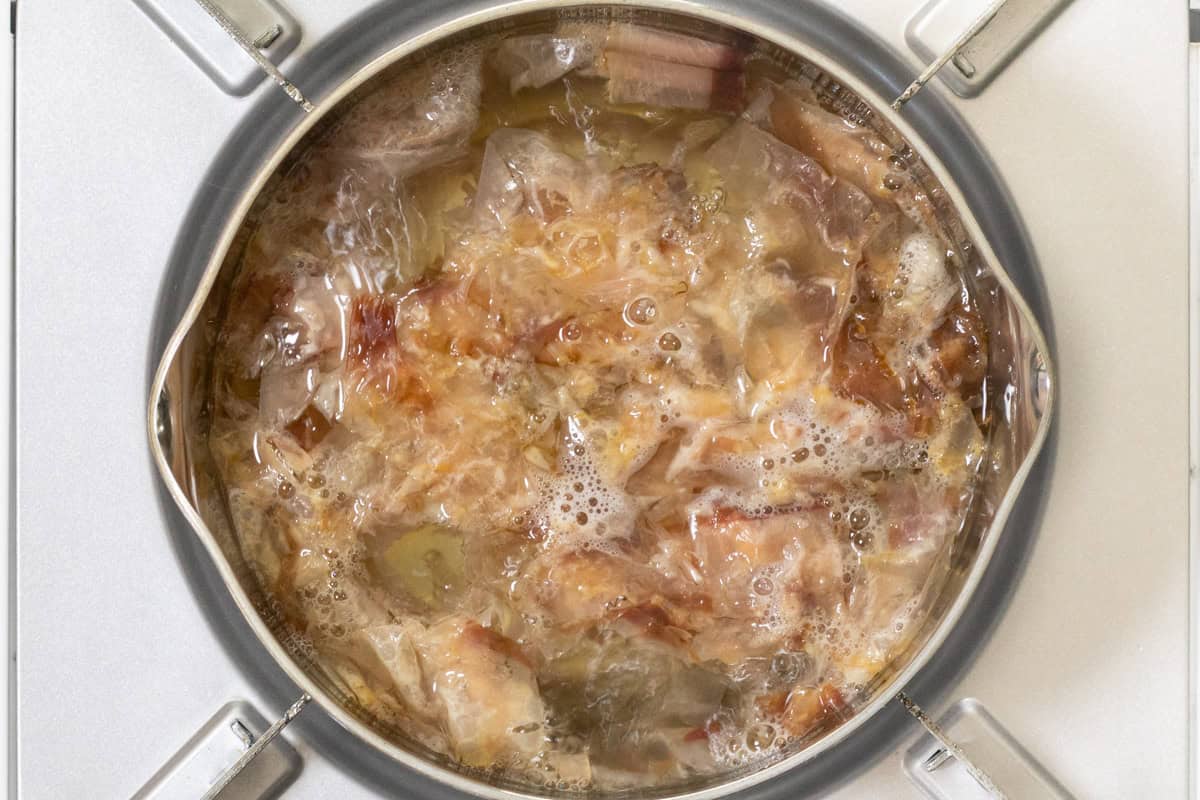
Step 3
Increase the heat and bring the water to a boil. Once boiling, reduce the heat to low, add bonito flakes, and let it simmer for 6 minutes.
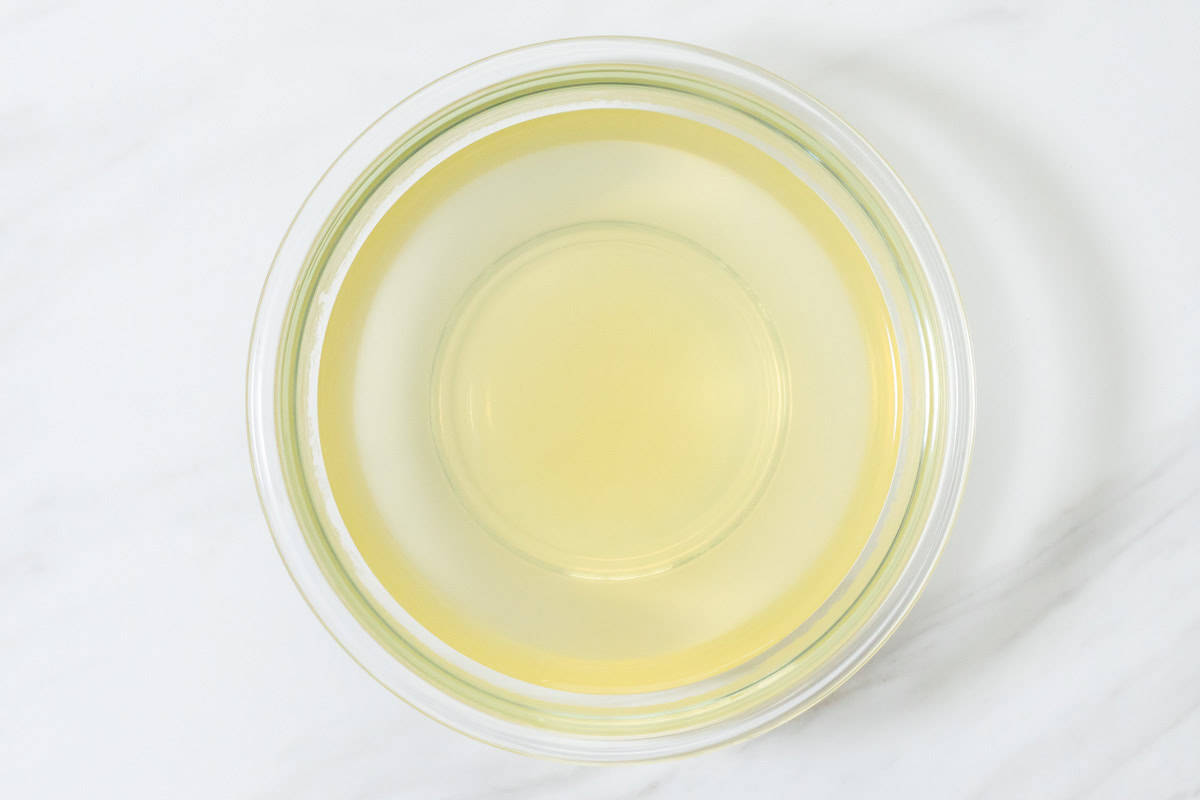
Step 4
Turn off the heat and strain the mixture through a sieve lined with paper towels or a cloth (such as cheesecloth). Alternatively, if you don't mind a few fine bonito flakes remaining, you can simply use a fine-mesh strainer. Awase dashi (udon broth) is now ready.
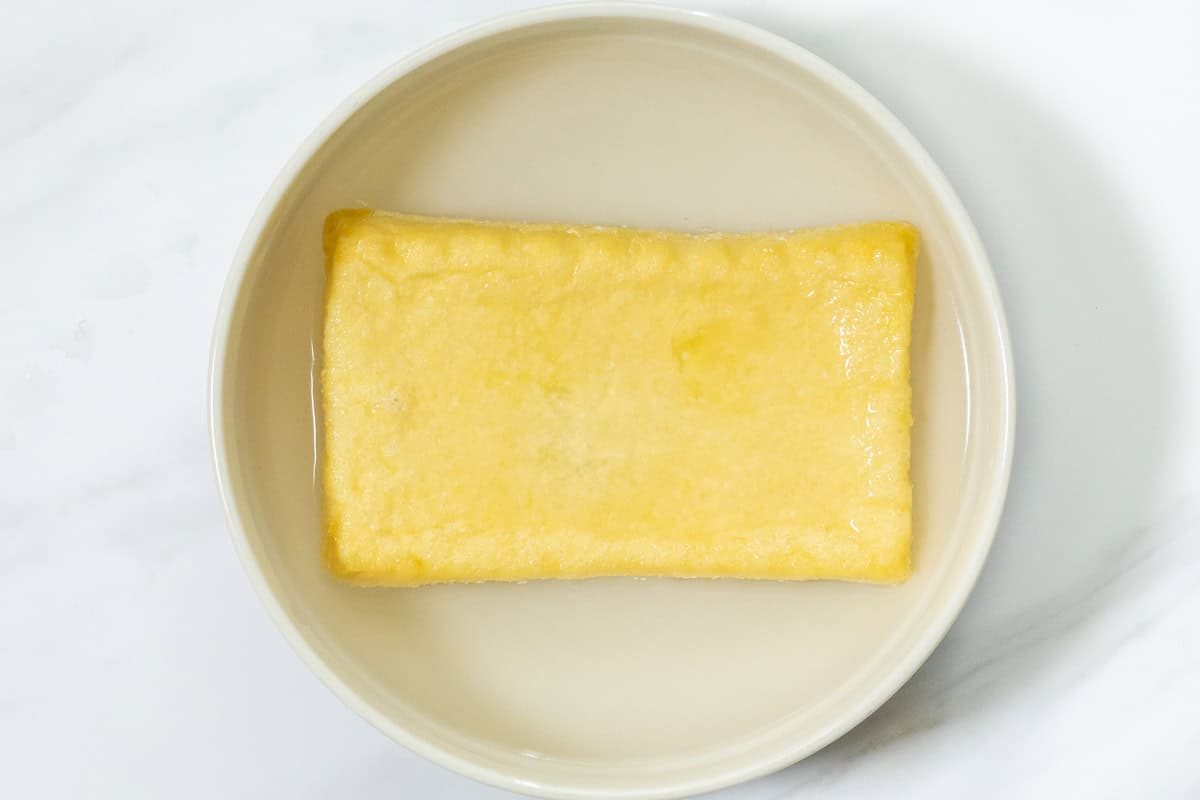
Step 5
Place the aburaage in a heatproof bowl and pour hot water (not listed in the ingredients) over it to remove any excess oil. Remove it from the bowl, and once it has cooled enough to handle, gently squeeze out any remaining moisture. If your aburaage is large, you can optionally cut it into halves or quarters.
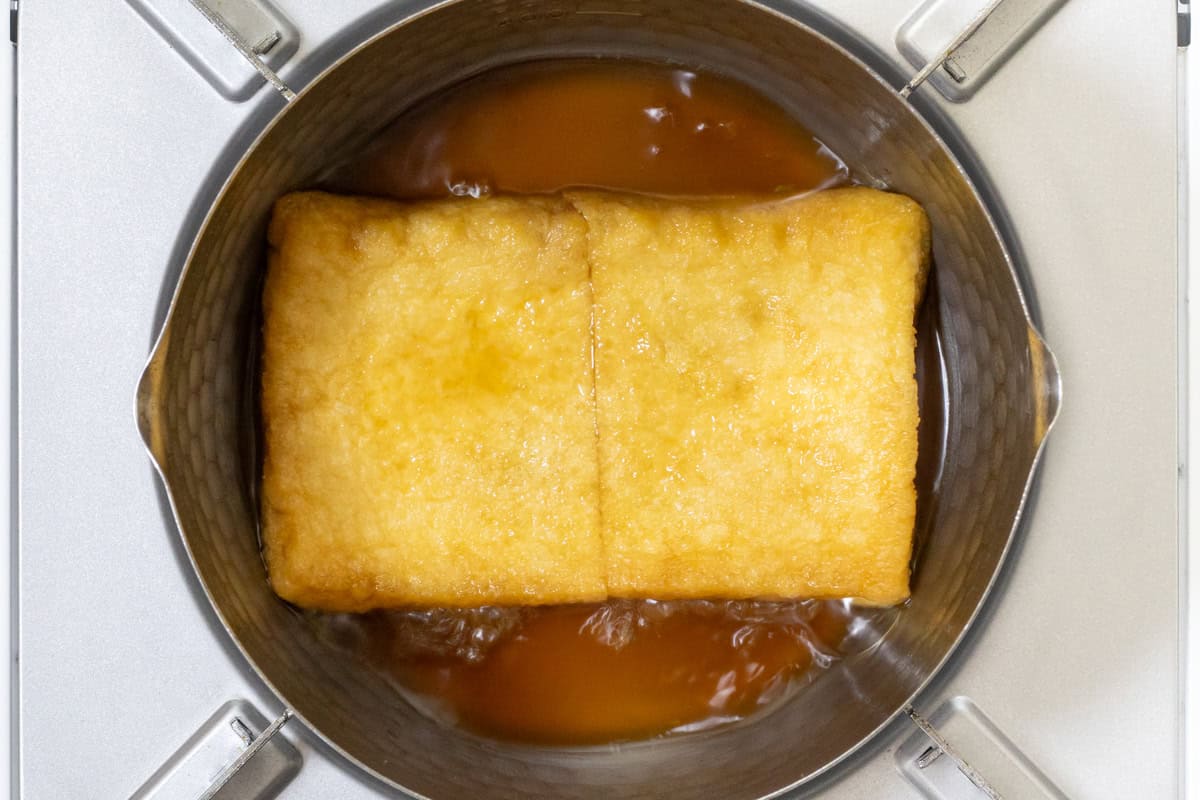
Step 6
In a pot, combine the ingredients for seasoning aburaage (awase dashi, mirin, sugar, and soy sauce), and bring it to a boil. Once boiling, add the aburaage and simmer over low heat, flipping occasionally, for about 15 minutes.
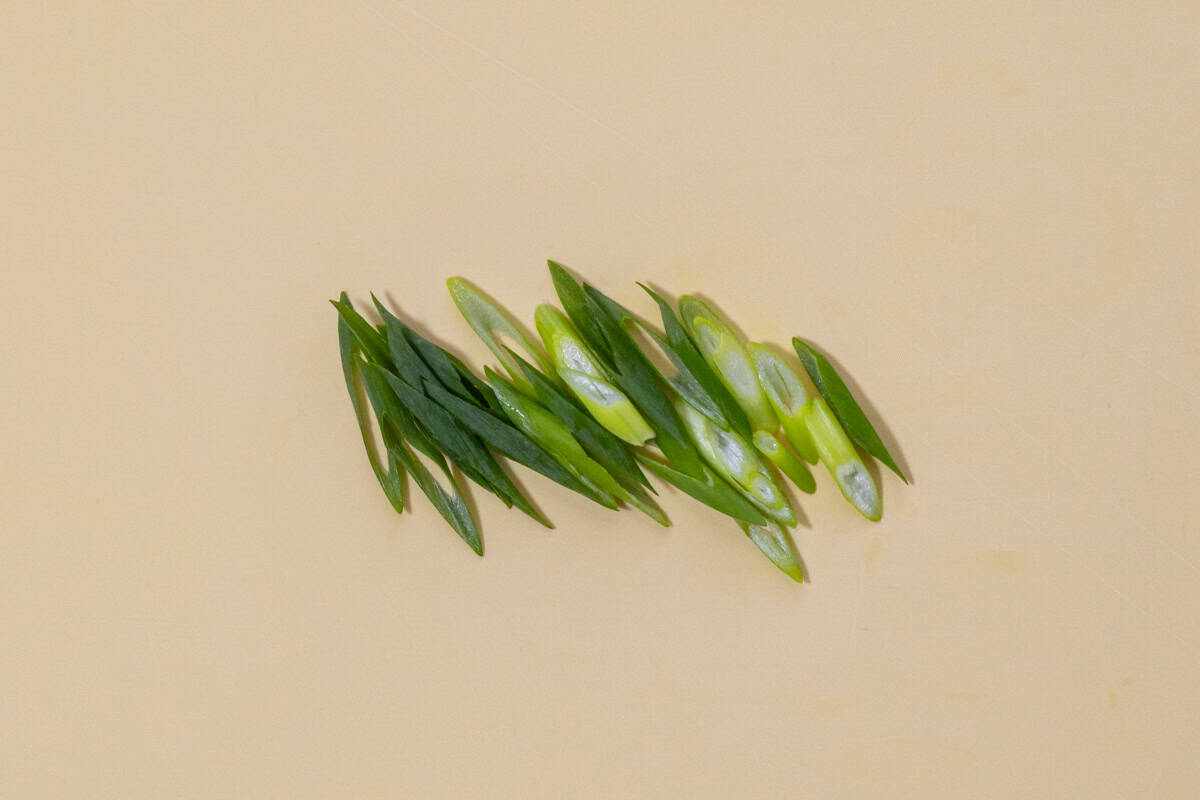
Step 7
Thinly slice the green onion diagonally or into rings.
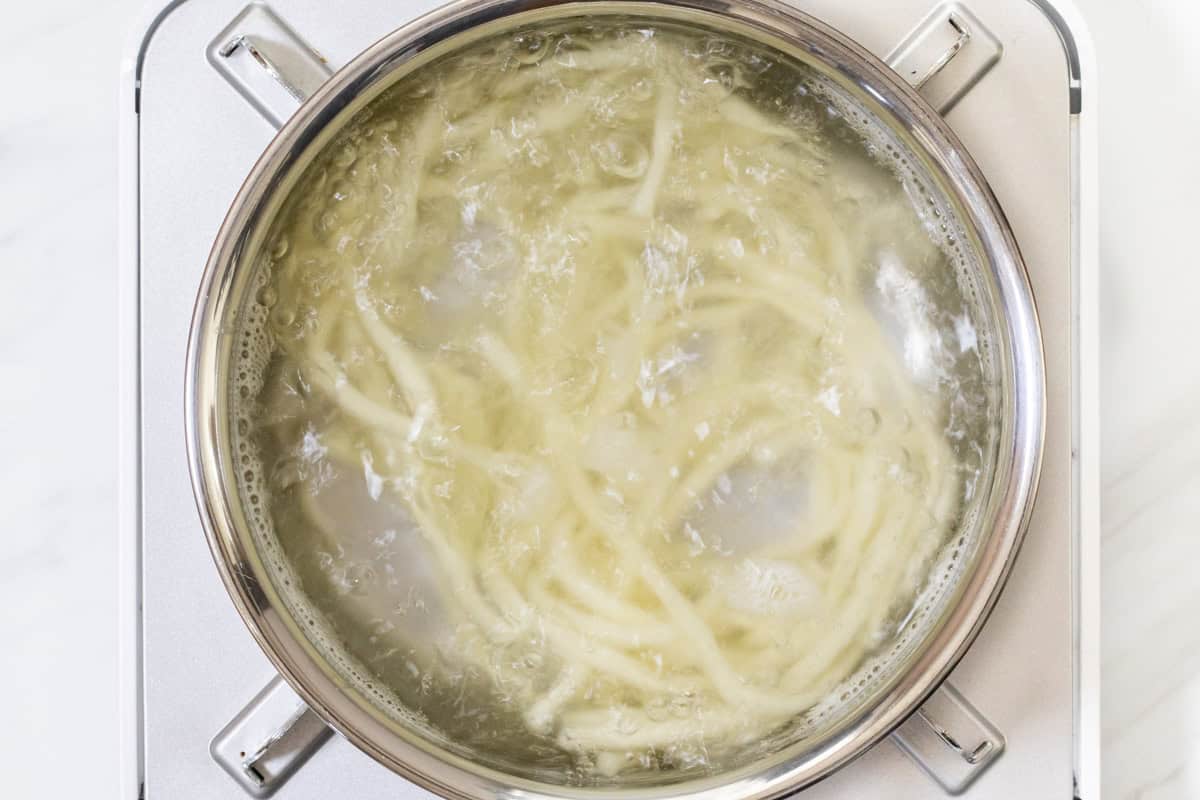
Step 8
If using fresh, dried, or pre-cooked udon noodles: Boil the udon noodles according to the package instructions. Once cooked, drain them in a colander.
If using frozen udon noodles: Lightly sprinkle water over the udon noodles. Then, place them on a microwave-safe plate, cover with plastic wrap or a microwave-safe lid, and microwave on medium power (500-600W) for 3.5 to 4 minutes, or until heated through. (Since this method can cause uneven heating, it is best to microwave one serving at a time. You can also boil them like the other types of udon noodles.)
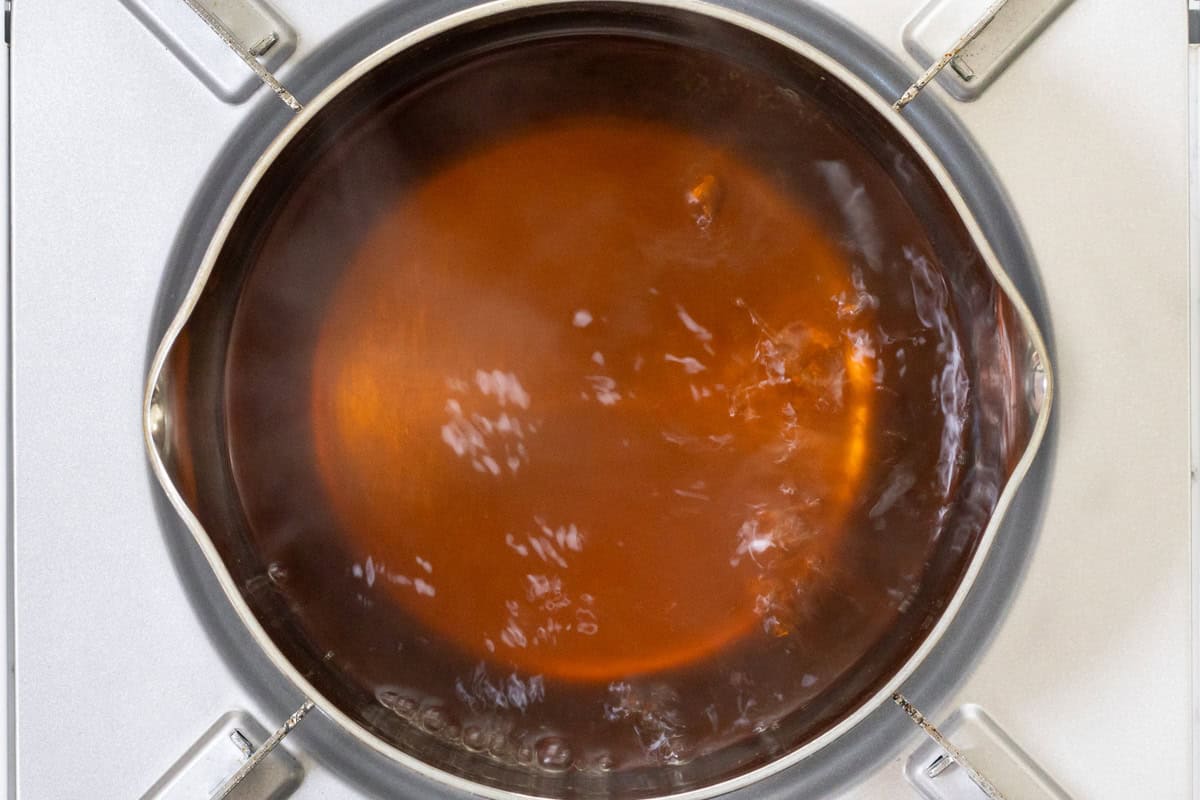
Step 9
Return the dashi to the pot, add mirin and light soy sauce, and bring it to a boil. Once it starts boiling, remove it from the heat.
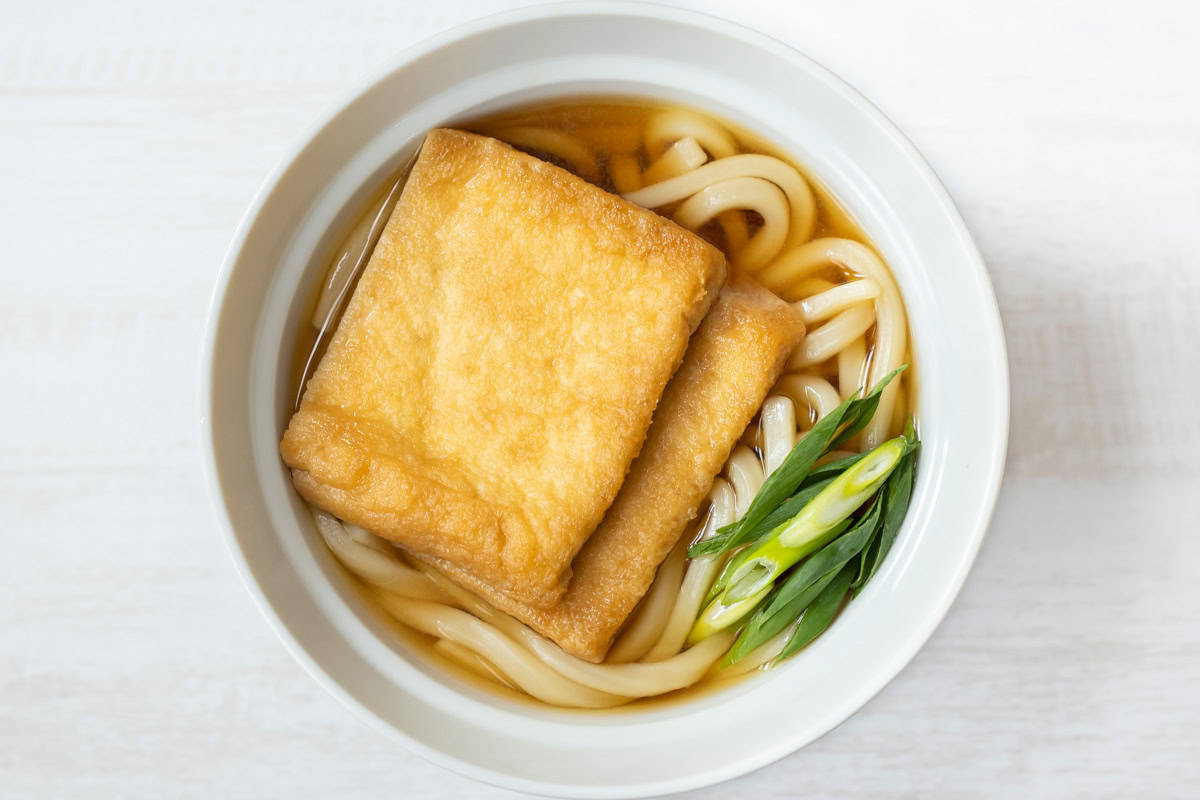
Step 10
Place the udon noodles in a bowl and pour the liquid mixture (udon soup) over them. Loosen the noodles with chopsticks, then top with the seasoned aburaage (inari age) and green onions.
To store
This dish is not suitable for storage because cooked udon noodles tend to lose their texture over time, making them less enjoyable. However, the udon soup alone can be stored for up to 3 days.
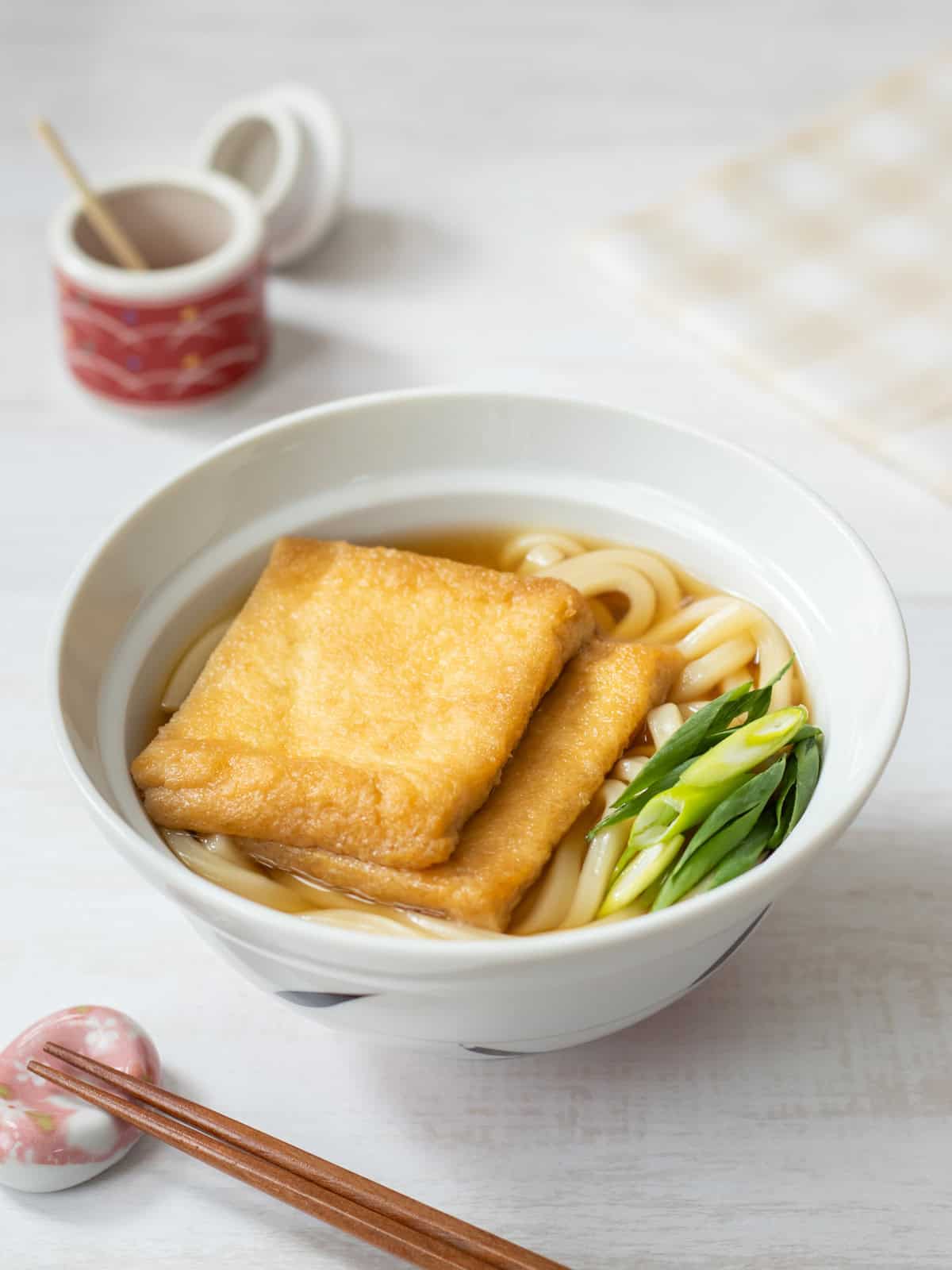
If you try this recipe, I’d love to hear what you think. Please consider leaving a review and star rating in the comments below. If you enjoyed it, I’d really appreciate it if you shared it with your friends.
More udon noodle soup recipes you'll love
Recipe card

Kitsune Udon (Authentic Osaka-Style)
Ingredients
- 1 serving udon noodles (fresh, dried, pre-cooked, or frozen)
- 2.1 oz aburaage (fried tofu pouches) or inari age (seasoned fried tofu pouches) (If using store-bought inari age, the ingredients listed below under "For seasoning aburaage" are not necessary.)
- 1 green onion / scallion
- ½ Tbsp mirin
- 1 ½ Tbsp light soy sauce (You can substitute it with regular soy sauce; the main difference is the color.)
Awase dashi (udon broth) — if using aburaage:
- 2 ¼ cups water
- 0.2 oz kombu (dried kelp)
- 1 cup bonito flakes (katsuobushi)
Awase dashi (udon broth) — if using store-bought inari age:
- 1 ½ cups water
- 0.15 oz kombu (dried kelp)
- ⅗ cup bonito flakes (katsuobushi)
For seasoning aburaage:
- ½ cup awase dashi (prepared in step 4)
- 1 Tbsp mirin
- 1 Tbsp sugar
- 1 Tbsp soy sauce
Instructions
- Put water and kombu in a pot and let it sit for at least 30 minutes until the kombu softens.
- Heat the pot over very low heat for about 10 minutes or longer. When small bubbles start to appear on the surface, remove the kombu.
- Increase the heat and bring the water to a boil. Once boiling, reduce the heat to low, add bonito flakes, and let it simmer for 6 minutes.
- Turn off the heat and strain the mixture through a sieve lined with paper towels or a cloth (such as cheesecloth). Alternatively, if you don't mind a few fine bonito flakes remaining, you can simply use a fine-mesh strainer. Awase dashi (udon broth) is now ready.
- Place the aburaage in a heatproof bowl and pour hot water (not listed in the ingredients) over it to remove any excess oil. Remove it from the bowl, and once it has cooled enough to handle, gently squeeze out any remaining moisture. If your aburaage is large, you can optionally cut it into halves or quarters.
- In a pot, combine the ingredients for seasoning aburaage (awase dashi, mirin, sugar, and soy sauce), and bring it to a boil. Once boiling, add the aburaage and simmer over low heat, flipping occasionally, for about 15 minutes.
- Thinly slice the green onion diagonally or into rings.
- If using fresh, dried, or pre-cooked udon noodles: Boil the udon noodles according to the package instructions. Once cooked, drain them in a colander.If using frozen udon noodles: Lightly sprinkle water over the udon noodles. Then, place them on a microwave-safe plate, cover with plastic wrap or a microwave-safe lid, and microwave on medium power (500-600W) for 3.5 to 4 minutes, or until heated through. (Since this method can cause uneven heating, it is best to microwave one serving at a time. You can also boil them like the other types of udon noodles.)
- Return the dashi to the pot, add mirin and light soy sauce, and bring it to a boil. Once it starts boiling, remove it from the heat.
- Place the udon noodles in a bowl and pour the liquid mixture (udon soup) over them. Loosen the noodles with chopsticks, then top with the seasoned aburaage (inari age) and green onions.
Notes
- If you already have udon broth (awase dashi or another type of dashi), start from step 5. In that case, use 1 ¾ cups (420 ml) if using aburaage, or 1 ¼ cups (300 ml) if using store-bought inari age per serving. Additionally, if you are using store-bought inari age, you can skip steps 5 and 6.
- This dish is not suitable for storage because cooked udon noodles tend to lose their texture over time, making them less enjoyable. However, the udon soup alone can be stored for up to 3 days.

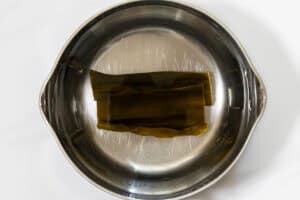
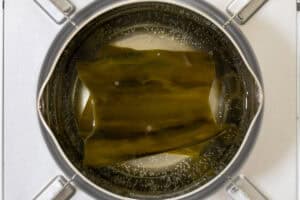
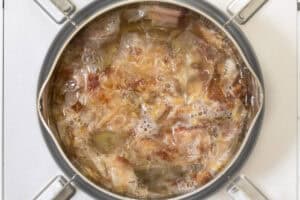
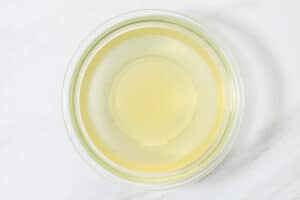

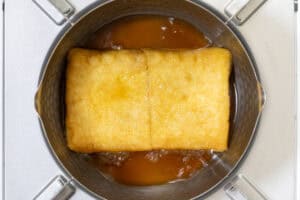
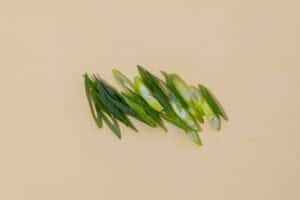
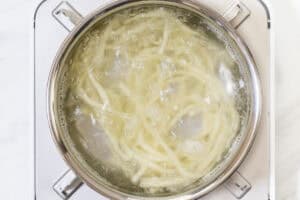
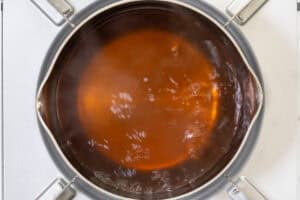


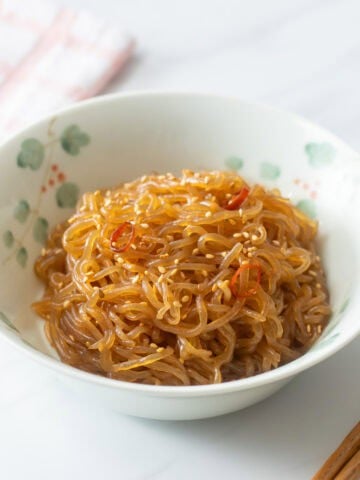
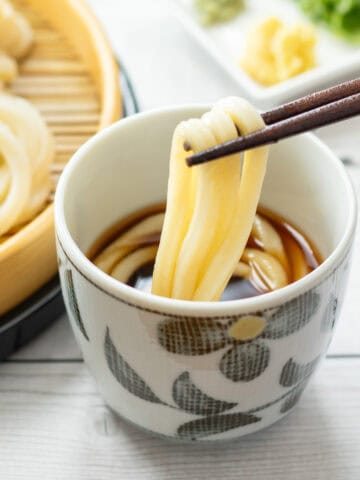
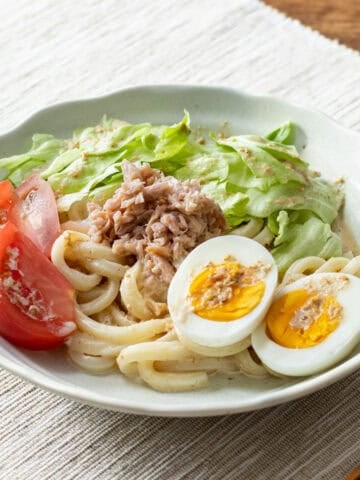
Leave a Rating and a Comment